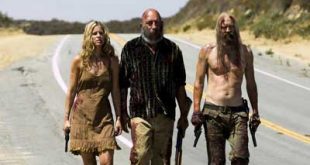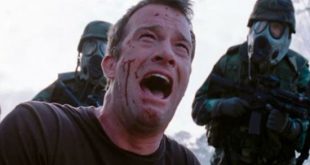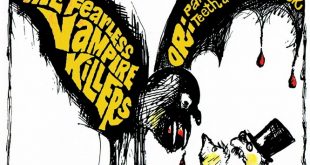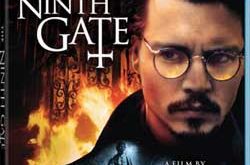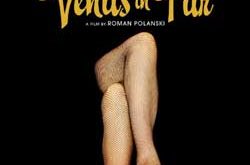Movie: Rosemary’s Baby (1968) – Questions and Answers
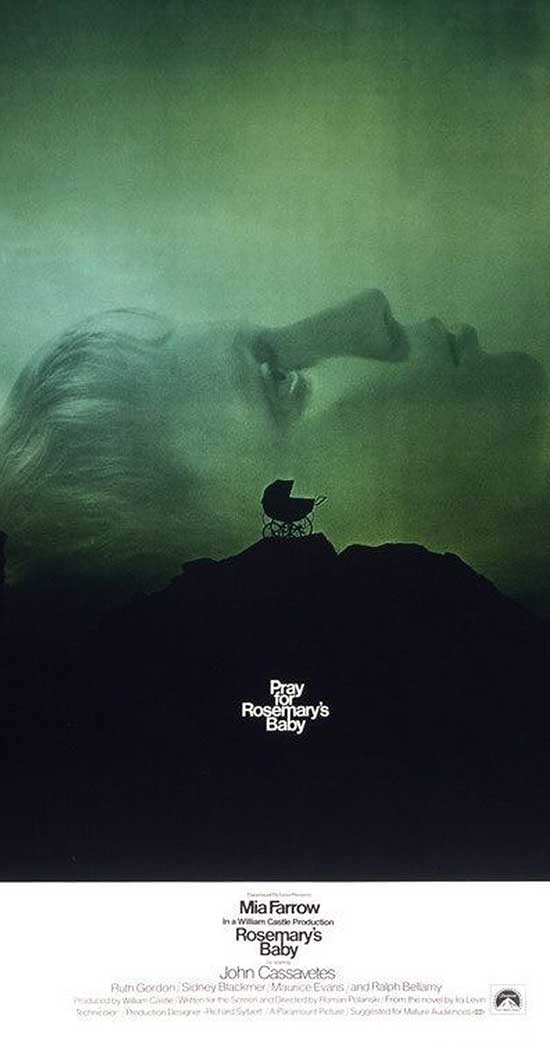 This month is a discussion of Rosemary’s Baby, one of the three legendary films considered the unholy Hollywood trilogy, this film directed by Roman Polanski; it does not mention his crimes, rather only focusing on his movie. So why chose this film as the next Q&A in this series? The movie turns 50-years old in 2018, and lasted the test of time, still as controversial then as now, and with more emphasis on women’s rights, while horror elements surround the flick, still borders more as a psychological thriller hence the ability to earn Oscars. Needless to say, spoilers are in this article, you’ve been forewarned.
This month is a discussion of Rosemary’s Baby, one of the three legendary films considered the unholy Hollywood trilogy, this film directed by Roman Polanski; it does not mention his crimes, rather only focusing on his movie. So why chose this film as the next Q&A in this series? The movie turns 50-years old in 2018, and lasted the test of time, still as controversial then as now, and with more emphasis on women’s rights, while horror elements surround the flick, still borders more as a psychological thriller hence the ability to earn Oscars. Needless to say, spoilers are in this article, you’ve been forewarned.
What is the initial concept of the film Rosemary’s Baby?
It’s based from the 1967 novel by Ira Levin [1929-2007], adapted by Roman who wrote the screenplay and likely did the honest screenplay from original work ever and since, however his rough script had an enormous rewrite it tallied over 4-hours.
The actual movie concerns a young couple involving Guy Woodhouse (John Cassavetes) a struggling actor, with minor success, and his wife Rosemary, who move into the Bramford, a New York apartment building, a very gothic establishment, and known for some dreadful deaths. Shortly after Rosemary’s torturous impregnation she suspects her elderly neighbors Roman and Minnie (Sidney Blackmer and Ruth Gordon, respectfully) belong to a witch’s coven, who worship the Devil. The film also marked the American debut for Polanski, he delivers a classic movie.
One needs to note Levin sought inspiration for this novel from his pregnant wife, and enclosed the fears and worries of would-be parents, in 1965 and then wrapping that into the much talked about religious event occurring the following year, June 6, 1966… Oh scary! However, isn’t that four ‘sixes’, oh well overlook the details it all equals the number of the beast, then society going through a religious counterculture, the rise of empowering women, and more society backlashes.
Was the legendary b-movie director William Castle involved with the project, Rosemary’s Baby (1968)?
Yes, he was, though not to the extent he originally wanted, as he sought the spotlight and a-list stardom. William, mortgaged everything he owned to obtain the rights, (it was not uncommon for him to do this since he did it during the making his well-known low budgeted flicks The House on Haunted Hill (1959); The Tingler (1959) and 13 Ghosts (1960)), he always made enough back to get himself out of debt. Ira’s book has yet to published, and therefore a steal with the rights coming at a low cost, for a novel achieving great success, and still lives on in many horror fans collections. He found himself rejected from the position of director by the head of Paramount Studios, Evans, tried to pass the duties onto his idol Alfred Hitchcock, who rejected the film as well as the topic likely due to his upbringing from Jesuit teachings. Robert Evans, changed the face of Paramount in later years with such films as True Grit and The Godfather, but this film gave the studio a sound footing in the horror genre and flexed muscle in larger productions. One needs to note that, William made a cameo in the film outside of phone booth with a paranoid Rosemary frantic inside making calls. In the end, Castle had success and later accused of great immoral behaviors for encouraging Satan arise in power, in fact with all the deaths and health problems befalling others of the production he became convinced a witches’ spell was cast upon them all.
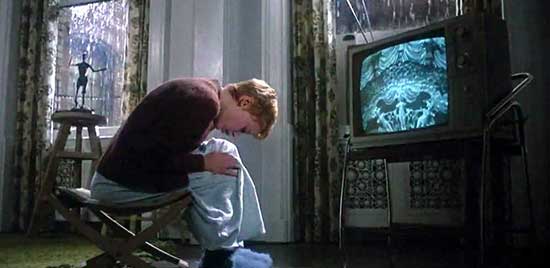
What is the Unholy Hollywood Trilogy?
During the span of about 8-years three movies dealing with the occult swirl in the horrors of audience’s minds those include Rosemary’s Baby (1968) [which is more of psychological thriller], The Exorcist (1973) and The Omen (1976). These films each contain oddities on and off the sets, which many point to the rise of the Devil and demonic forces, as society cast aside the dedicated belief in religion, and all big-budgeted productions, although many other notable films found on this subject exist but few ever mention them.
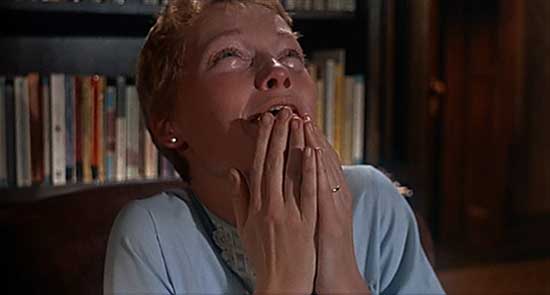
Did the film Rosemary’s Baby (1968), have a curse attached to it?
First, bad things happen all the time, but sometimes the unknown power can arise in mysterious ways and these unholy Hollywood films definitely bring that along and more to the forefront, however this movie has more horrifying acts attach to it. Most notable, the murdering of Roman’s wife Sharon Tate, a model and actress, and eight-and-a-half months pregnant, (26-years old) by members of Charles Manson’s cult. Some contributed her demise to her association to her husband’s film (which is very sick), although many overlook her film debut in the 1966 movie Eye of the Devil, where she portrayed a witch. She died on August 9, 1969, however one needs to reference back to April 1969, when composer Krztsztof Komeda of Rosemary’s Baby died from a steep fall and laid in a four month coma (coincidentally in Levin’s book Rosemary’s suspicious friend dies in an similar manner).
lso in that same month, producer William Castle received hate mail constantly and suffered from severe kidney issues, barely recovering, never achieve similar success in Hollywood. Then the Beatles connection with their The White Album, leading to the assassination of John Lennon near the Dakota (landmark building called in the story as the Bramford). Some even note Levin’s quiet divorce in 1968, as a link to the curse, a far-stretch to the imagination of many; however, he constantly received criticism from Catholics in general as his work mocked religious persons and their faith. Mia Farrow, found herself served with divorce papers on set, too from her then husband Frank Sinatra.
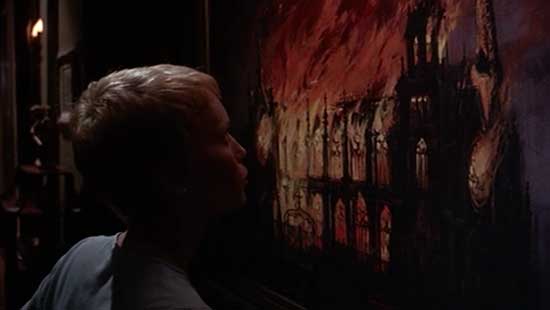
Why is Rosemary’s Baby 1968 considered a masterpiece?
Polanski truly takes his time establishing each of this characters, thereby upping the suspense factors greatly he submerges the viewers with details, and yet at times limiting them to Rosemary’s scope of vision, to these various individual’s’ mannerisms. By implentating the usage of long camera takes and masterfully POV (point of view) angles, 10-years prior to the famed technique in Halloween (1978) and 6-years before Black Christmas (1974), and it differs from the voyeurism that Hitchcock used in Psycho (1960). This adds to the horror slowly, a process called Horror Realism, not quickly which many modern horror audiences crave, with quick kills and gore, along with jump scares, none of that exists, rather carefully pulling the strings of uncertainty, paranoia, and skepticism. He adds beliefs and distrusts constantly, giving the viewer a clouded vision, allowing them to find their own way, layering in social commentary.
Mia Farrow starred as Rosemary Woodhouse, she’s shown as naïve, delicate, not stupid, rather no street smarts, and her book smarts highly limited, a narrow and confined life, filled with control. While Guy (John Cassavetes) the aspiring actor, seek the riches of fame and fortune, as the director noted, he deals with exactness and precision, while John takes a more liberal manner with improvisation note those throughout the film. It’s also clearly an hour into the film before the clear introduction of witches, devils and the such, and Polanski masks his intentions throughout the movie, up until the last scenes which makes the audience think perhaps Rosemary’s mad, and this deals pre-mother jitters. This extends the film past merely horror and rather into the realm of thriller with heavy emphasis on psychological drama.
The film contains a dangerous yet realistic scene, involving Rosemary walking out into traffic, this actually became a spontaneous scene, with Polanski informing Farrow, nobody will hit a pregnant woman, the director assumes the control of the camera work. There were no stunt personnel used in the scene, and yet they did a few takes, hence all the fear pure realism, and absolute trust given to the director.
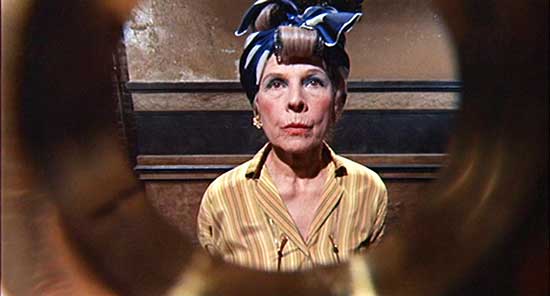
Does the film Rosemary’s Baby (1968) question religion?
The character of Roman, questions Rosemary’s faith, her loyal submission to the Pope (later showed in the dream sequence) more so to the opinion that he’s just a man fallible to all the same sins and temptations of mankind. Now, understanding this blasphemy to many Catholics, however it also hints to an interesting aspect, it all comes well in advance (estimated 17-years prior) of the sexual misconduct and crimes later revealed by mainly priests and the notable cover-up or suppression. Mia Farrow grew up in Catholic school and brings that background into the film and her character, thereby the subtle hint later shown by her clothing, blue and white (the Virgin Mary references, meaning loyalty and purity respectfully). Again, another reference to her upbringing as a Catholic, the Man holds the authority, a woman subservient to his lead and wisdom, his divine rights, she holds the fear of doing wrong and with it committing sin.
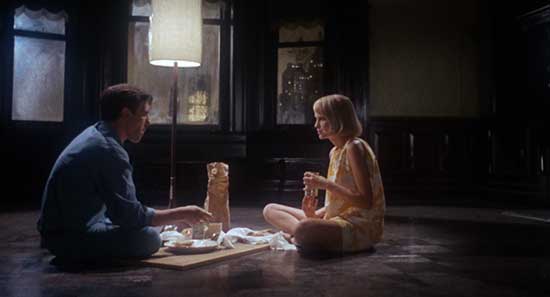
Was Anton LaVey involved with the film?
His name often associated as the representation of the Devil in the film, however a uncredited actor named Clay Tanner (who starred in Race with the Devil (1975), a movie involving a Satanic Ritual) performed this role, while others believe he served as a technical supervisor (unlisted on any paperwork). For those unaware, Anton LaVey was an author, musician and occultist, a founder of the Church of Satan and the religion of LaVeyan Satanism, and served a technical advisor on the occult theme movie The Devil’ Rain in 1975.
What in the world is the Dream Sequence in the flick?
The dream sequence rivals most which one views in films, still remain a vast mystery wrap in a puzzle with a picture of what the final needs to look like, this never contains the typical filters often associated with dreams, rather a crisp and vivid fluid pattern on display, along with distant audio mixes. The images nightmarish layered (raped by the Devil) and providing a yin and yang for one to examine and in fact creating a duality of good versus evil that which lives in everyone. While nothing truly makes much sense, it still gives a wonderous amount of enjoyment and yet above most other scenes in the films brings the most condemnation from Catholics especially regarding the Pope’s appearance. As for Sistine Chapel images painted by Michelangelo, it extends further, as the church at the time offended by the nudity depicted tried to paint over the ‘naughty’ areas, but never could match the color of the paint, as if divine intervention played a part. This sequence actually reminds one of that from Lucio Fuilci’s A Lizard in Women’s Skin (1971), a collection of bizarre imagines and strange angles.
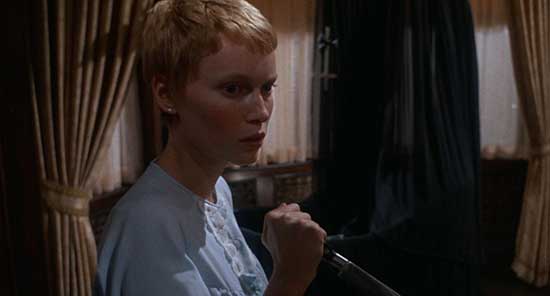
Is there an element of women’s suppression in 1968’s Rosemary’s Baby
Actually, both occur, first the suppression factor, the entire film actually a form of control, the control of Mia’s character, her husband exerts a condescending mannerism towards her, especially after her impregnation. After all, he made the choice for her to become the vessel for the Devil, she wanted a family, but her wishes all dismissed, they were far less important to his desire for fame and fortune.
While Guy bullies her, many of the modern audiences find it all laughable, that Rosemary won’t take a stand for herself, but a portion of society then believed it was proper. She often finds herself denied information, even if it concerns her own body, for example Dr. Sapirstein (Ralph Bellamy), her husband, and others tell her not to read books, denying her knowledge a concept of then and repeated by some today (and other cultures) to attend school only to find a husband, and stay home. She finds herself losing power, even after going to Dr. Hill (Charles Grodin) not a part of coven or a witch, he calls her other doctor and husband once again reinforcing the aspect that men know what’s best for women, and the child they carry, and their mind and/or body is theirs to choose what to do with. In fact, it goes to note that the woman, needs not worry “pretty little head about it,” and sets in many suggestions and questions about woman’s rights over her life, body, and pregnancy all set in the years of 1965 to 1966. As for the ‘fear of women’ aspect, it centers more on the fear of women’s sexuality, from her expressing it in style of a haircut to her body, and it still reigns as a controversy 49-years later.
Some of these fears more grounded in religion, if a woman expresses extreme grief rather stoic acceptance, she’s possessed by the devil, if one sneezes a hail of ‘God Blesses You’ for it was once thought the brief uncontrolled moment allows for the Satanic forces to take over the person.
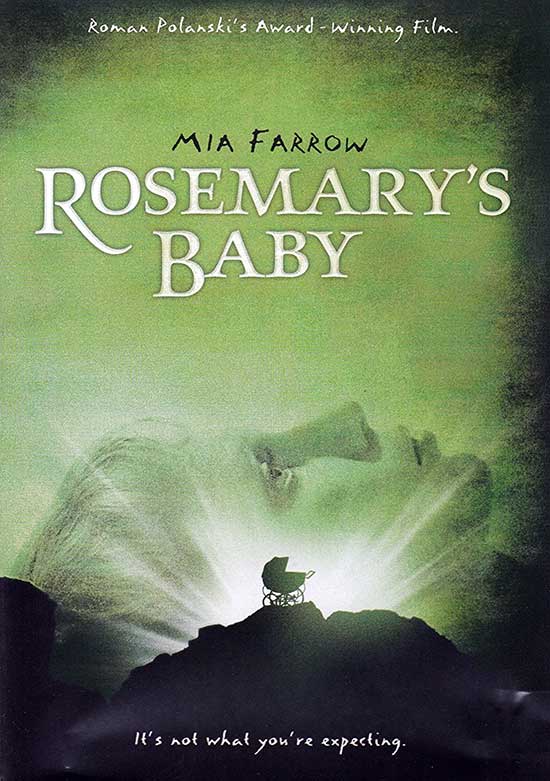
Are there any other underlying messages or references?
Polanski placed quite a few references namely the fear of city living, concerning the closeness to strangers, which in almost every film depicts in New York City of the hustle and bustle of thousands of hurrying ants stepping on each other. Note, that in the film Crocodile Dundee (1986), the lead character states in response to 7-million people living in NY City, “… [people wanting to live together, a friendly place] …” Where an individual hears conservations through walls, sometimes clearly or even muffled, and where everyone knows each other’s business.
It extends pasts the religion, with regard to the Time magazine April 8, 1966 cover ‘Is God Dead’, and into deeper realms of women’s rights and denials, and ambition in general even hinting to abortion. Another reference comes from the moment of sheer joy, when Rosemary feels a kick, however Guy avoids touching her, knowing what’s inside her far from human and definitely not of his creation. As note of trivial the scene involving Scrabble (used a plot device to reveal the secret about Guy), actually comes from another film, which uses the means in a similar manner, that movie Suspicion (1941) directed by Alfred Hitchcock.
Why isn’t the baby revealed to the audience?
By not showing the baby, extends to the hidden monster, and very old technique of not displaying what lies in the shadows, in this case the black bassinet, all one hears is Rosemary crying out about his devil’s eyes, and hearing from those gathered his father’s eyes. This layers more suspense, and adding to the factor of never showing, noting to some that he exists in their society, perhaps as a Pastor, Priest, or even your Employer, after all who knows what lies in the heart of the mankind.
The influence of this film (Rosemary’s Baby (1968)) still important?
Yes, even though the remake for television failed miserably in 2014, casted completely wrong and into the worst mode to tell this story, and in 1976, a sequel entitled Look What’s Happened to Rosemary’s Baby (a TV movie) by director Sam O’Steen. The soundtrack still works wonderfully, recently released by Waxwork Records, a must purchase for fans of the film. Noting Komeda’s work most important, without music scenes on screen die, and lose a connection to the audience but with Farrow’s own voice carrying the lullaby it carries one lovingly in the protection of a mother’s arms and usage of strings the reach out grab hold anyone not fully paying attention. In addition, Critican films did a marvelous release of the film, as the memorable highly limited, a few stills and lobby cards still available, along with a Japanese Press book likely from a reissue by Paramount in 1985. Levin’s book still sells well, and now with a new foreword for the 50th Anniversary.
The film generates constant interest from filmmakers, actors, and critics of film and social dynamics. In fact, at the time pregnant women refuse to see the film do to personal fears that the evil on the screen might transcend into their womb and destroy the wholesome blessed soul of their unborn child, to some an absurdity and others reinforcing the deep faith to their religious beliefs. In addition, to earning a listing on the American Film Institute and noting it earn both Oscar nominations and a win for Best Actress in a Supporting Role to Ruth Gordon (as Minnie Castevet).
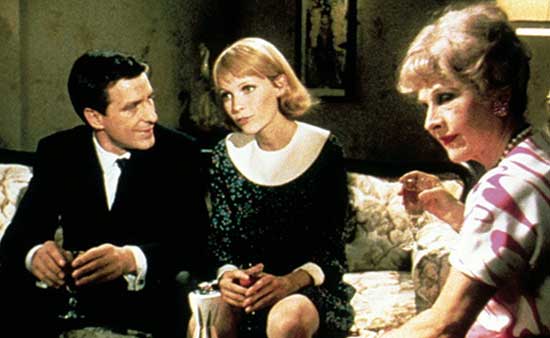

 Horror News | HNN Official Site | Horror Movies,Trailers, Reviews
Horror News | HNN Official Site | Horror Movies,Trailers, Reviews
